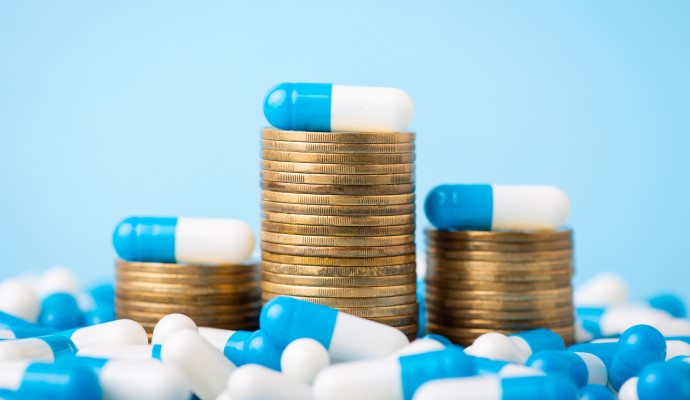National Healthcare Spending Grows 2.7% as COVID-19 Relief Runs Dry
National healthcare spending grew at a slower rate compared to 2020, but still reached a total of $4.3 trillion last year.

Source: Getty Images
- National healthcare spending is slowing down in the US compared to a significant 10.3 percent increase in 2020. However, healthcare costs remain high as US health expenditures reach $4.3 trillion.
Healthcare spending now accounts for 18.3 percent of the US’ gross domestic product (GDP), a percentage lower than 19.7 percent in 2020 but still higher than 17.6 percent in 2019.
The data released by CMS actuaries earlier this week was part of the National Health Expenditures (NHE) report. The NHE report is published annually and measures total annual spending by the delivery of healthcare goods and services (e.g., hospital, physician, and prescription drugs), type of payer (e.g., commercial health insurance, Medicare, and Medicaid), and type of sponsor (e.g., businesses, households, and federal/state governments).
The 2021 NHE Report showed that healthcare spending in the US grew by 2.7 percent last year as the federal government provided less financial support to healthcare providers to offset losses and added expenses from the COVID-19 pandemic.
The federal government spent 3.5 percent less on healthcare in 2021, as Provider Relief Fund and Paycheck Protection Program (PPP) funds, which assisted businesses with payroll, increased expenses, and lost revenue due to the pandemic, dried up. Federal public health activity also declined while there was slower growth in the federal portion of Medicaid payments, according to the report.
Lower federal spending on healthcare more than offset the impact of greater healthcare utilization and insurance coverage that year, CMS stated.
Spending on hospital and physician services slowed relative to 2020. Hospital care spending increased by 4.4 percent in 2021 compared to 6.2 percent growth in 2020. In total, spending on hospital services reached $1.3 trillion.
Meanwhile, physician and clinician services increased by 5.6 percent to $864.6 billion compared to a 6.6 percent growth in 2020.
Retail prescription drug services was the only goods and services category to see growth in 2021. The report showed that spending on the medications rose by 7.8 percent to reach $378.0 billion in 2021, a faster rate than in 2020 when spending increased by 3.7 percent.
CMS actuaries said more people used prescription drugs in 2021, leading to accelerated spending growth. Lower hospital and physician service spending was again attributed to a substantial reduction in funding from federal programs, including COVID-19 relief. However, spending growth was higher than in 2020 for the major payers of hospital and physician services. Those include Medicare, Medicaid, private health insurance, and out-of-pocket spending.
The report also found that total out-of-pocket spending increased by 10.4 percent following a slight decline in 2020. Patient financial responsibility increased in 2021 as people went back to the doctors to receive non-pandemic-related care. In total, household spending on healthcare increased the fastest of all sponsors at 6.1 percent.
In terms of payers, private health insurance spending was the highest at $1.2 trillion. It increased by 5.8 percent in 2021, driven by substantial growth in healthcare services spending and higher enrollment. About 200.7 million people were privately insured last year.
Medicaid enrollment also grew, rising by 11.2 percent in 2021 versus 4.8 percent in 2020. Despite greater enrollment numbers, Medicaid spending increased slightly from 9.3 percent in 2020 to 9.2 percent in 2021, reaching $734.0 billion last year.
Meanwhile, Medicare spending increased significantly, growing 9.2 percent (versus 3.6 percent in 2020) to reach $900.8 billion in 2021. Enrollment also increased by at a slower rate.
Notably, CMS actuaries reported that the number of uninsured individuals fell for the second consecutive years due to Medicaid and private health insurance enrollment boosts.
